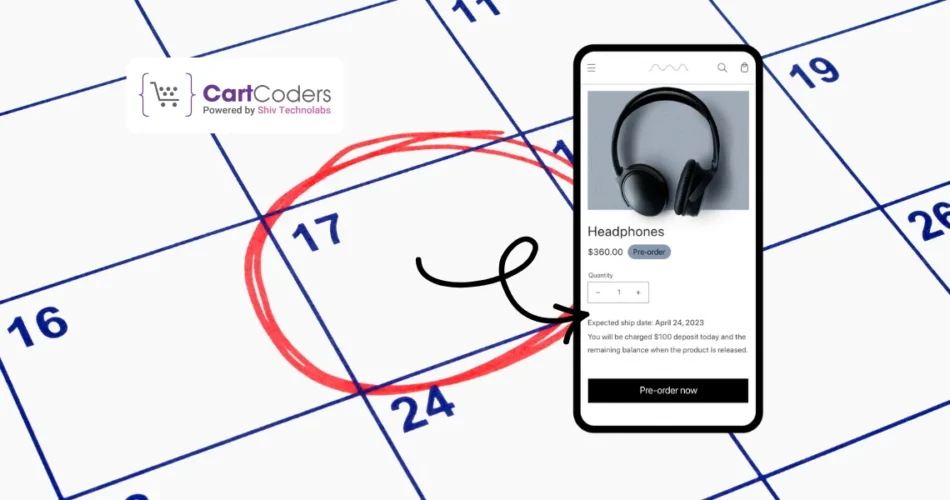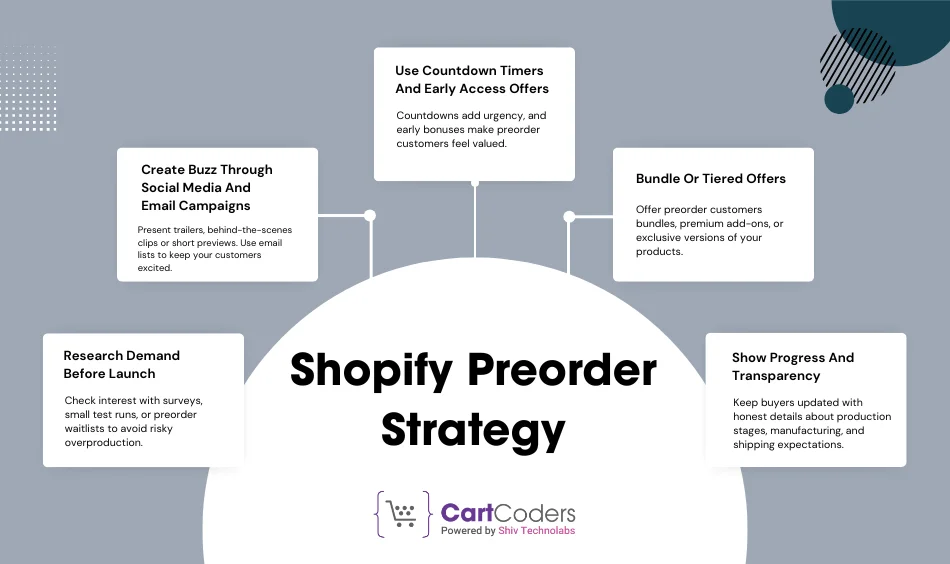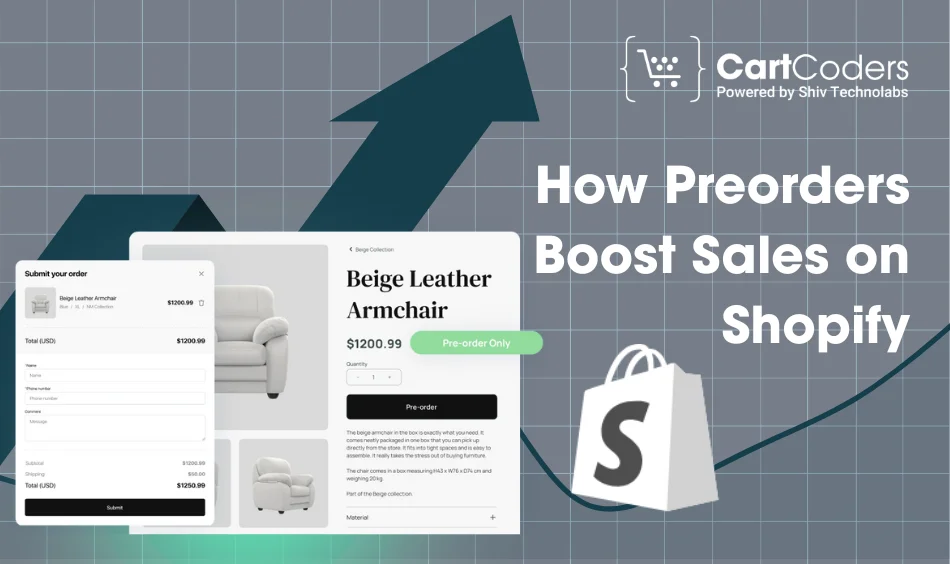Custom Engagement Solutions
Unlock tailored solutions with a free, no-obligation strategy session.
Expert Developers & Engineers on Demand
Scale Your Team with Skilled IT Professionals
Expert Guidance for Digital Transformation

Preorders in Shopify allow sellers to take orders before a product is in stock or officially launched. Customers either pay or reserve the product before it is available. This model helps merchants reduce their financial risks, engage their audience, and gauge interest before making significant investments in stock.
By 2025, a growing number of Shopify merchants are turning to preorders because they not only reduce inventory risks but also create momentum before launch. Preorders today are more than just a way to reserve items—they are a strategic approach to growth and early revenue.
This guide covers the importance of preorders, strategies for building demand, various setup methods, key differences between preorders and backorders, best practices, payment models, examples of successful brands utilising preorders, and how CartCoders can assist in implementing this strategy.
Preorders are not just a tool—they use customer psychology and solve business problems at the same time.
A preorder creates the feeling of scarcity. Shoppers feel they are getting early access others don’t have. That feeling of joining in before the public release makes them more likely to purchase without waiting.
Preorders bring in money before production or delivery. That improves cash flow for merchants by lowering upfront capital stress. Preorders also show which products customers are most interested in. Sellers can then order correct amounts of stock without overproducing or wasting resources.
When Shopify merchants add preorder options, their stores act as launchpads for demand. Customers who preorder show their trust and commitment, and that early trust often leads to higher launch sales when products finally reach the market.

To generate momentum before a new product is available, use these strategies:
There are two ways to set up preorders in Shopify: directly with the platform or with apps.
You can assign a product release date in Shopify. Orders placed before that date are processed as preorders. This works best for simple preorder needs, but it has limitations.
Apps provide more advanced features such as deposits, automatic messaging, stock limits, and customized buttons.
When set up properly, your Shopify store becomes a tool for driving preorder flows instead of just taking regular orders.

Preorders bring measurable benefits to online stores beyond just early ordering.
Opening preorders makes shoppers excited and draws attention before stock even lands.
Instead of waiting until inventory is on hand, sales are secured early. This prevents lost opportunities from customers forgetting or moving on.
Money arrives before fulfillment, funding production or marketing without borrowing.
Once customers trust you from an early preorder, they are more likely to continue preordering future launches. Loyalty and repeat business grow.
If the preorder numbers are too low, merchants can adjust strategies or stop production to avoid costly mistakes.
Preorders and backorders often get confused, but they are different approaches.
Here’s a quick breakdown:
| Feature / Characteristic | Preorders | Backorders |
| Customer Expectation | They know it’s not yet available | They believe it will restock soon |
| Payment Timing | Full or partial upfront | Often processed at shipping |
| Use Case | New releases or restock events | Stock shortages of popular items |
| Risk | Delay or cancel disappoints buyers | Stock mismanagement delays orders |
| Marketing Advantage | Builds hype and excitement | Limited marketing use |
Choose based on your product cycle and level of customer demand.
Merchants need to handle preorders carefully to keep trust intact.
Following these rules helps preorder campaigns grow without frustrating buyers.
How payments are handled during preorder is crucial. Sellers can choose from different structures.
Many Shopify apps allow all of these, giving stores the flexibility to choose what works best.
Looking at real Shopify stores shows how preorders have worked in practice.
These examples prove preorder methods work for clothing, technology, beauty, and other categories.
CartCoders helps retailers not just understand preorders but also implement them fully.
Working with CartCoders means your Shopify preorders are professionally managed to maximize sales.
Preorders are more than tactical, they are a scalable growth approach. They create early demand, generate upfront money, reduce risks, and strengthen customer loyalty. They also help turn interest into secure, committed purchases well before stock arrives.
At CartCoders, we implement end-to-end preorder systems that connect payments, communication, and fulfilment. With the right setup, you can turn your next launch into a controlled, profitable campaign.If you want to integrate Shopify preorders into your business model, reach out to CartCoders.
By setting a future availability date on your product and changing the button label to “Preorder.” This works, but it lacks deposit options and advanced messaging.
The most effective apps are one that permit part-deposits and standard limits, automation in messaging, and support on the back-end. Select applications which are flexible to both the seller and buyer.
Yes. You can collect a deposit and charge the remaining balance later.
Preorders are made before product release, while backorders are taken for temporarily sold-out products.
Yes. They let merchants earn cash before delivery, which supports production and marketing.
Include information about what the shipping dates will be, the refund policy, and whether you are using a deposit or a pay-later option.
Send regular updates. If delays are long, consider offering discounts or cancellation.
Yes. Preorders guide production decisions based on demand, preventing unsold stock.
Use limited slots, visible order counters, countdown timers, and early bonuses.
They’re valuable for both. New launches benefit the most, but they can also manage popular restocks.
Projects delivered in 15+ industries.
95% retention rate, building lasting partnerships.
Serving clients across 25+ countries.
60+ pros | 10+ years of experience.